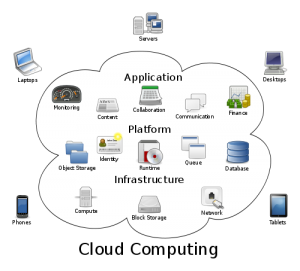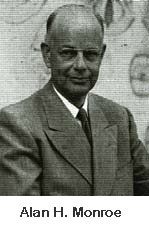And now for something REALLY fun….
 This post may not be directly important to your work as a marketer or lawyer, but I’m pretty sure you’ve heard or read many of these words in one context or another, and may even be wondering what they mean.
This post may not be directly important to your work as a marketer or lawyer, but I’m pretty sure you’ve heard or read many of these words in one context or another, and may even be wondering what they mean.
The Cloud? Social Discovery? SOA? De-dupe? SoLoMo? Robust? Emoticon?
Well, fact is, so do the people who actually use them in their work! Curious? No, that’s not on the list, but if you are, here are the Most Confusing High Tech Buzzwords of the of the Second Decade of the 21st Century, thus far (2010, 2011 & 2012) as released by The Global Language Monitor.*(see end of post for explanation of how the list was compiled.)
Note: Along with the tongue-in-cheek commentary provided by GLM, where I could find them, I’ve added common definitions in italics.
- Big Data. Big Data is a big buzzword. It has been called the key to new waves of productivity growth, essential to the US place in global economics, and more. Now if only we could agree on exactly what this means and how we get there. Consider yottabytes: A quadrillion gigabytes. Hint: Just think a lotta bytes. In information technology, big data consists of datasets that grow so large that they become awkward to work with using on-hand database management tools.
- ‘The Cloud.” The Cloud, in various manifestations has been ranked No. 1 for 2008, No, 4 overall for the decade, and now as No. 2 for 2012. Still all very nebulous. Most commonly defined as the Internet, where delivery of computing as a service (software as a service of SAS) rather than a product, i.e., shared resources, software, and information, are provided to computers and other devices.
- The Next Big Thing. A cliché rendered nearly meaningless by the innumerable daily claims made by VCs, entrepreneurs, college dropouts, etc. Actually, you can count the history of next big things on your fingers, and possibly toes.
- Social Discovery. Social discovery is the process by which a user finds and connects with another while a social network is a social structure of people with social connections between them. Webster’s 1910 definition: “Consisting in union of mutual converse.” Might be an excellent corporate strategy.
- Web 2.0 (3.0, and so on). Ranked as the 1,000,000th English-language word in 2009, it just keeps morphing along. Web 2.0 is a loosely defined intersection of web application features that facilitate participatory information sharing, interoperability, user-centered design and collaboration on the World Wide Web.
- Solid State. As in Solid State Disks (SSDs). Remember ‘solid-state’ televisions switched from vacuum tubes (Paleozoic)? How about LED watches from the ’80s (Mesozoic)? Today, it’s all-about Solid State Disks. Think iPad, net-books, and other handheld computers, all light weight because they don’t contain the spining hard disk drive. They use SSD for data storage.
- CERN. You might want to understand the acronym before the Earth is swallowed up in the ‘mini’ black hole it just might create. CERN is The European Organization for Nuclear Research. It is the world’s largest particle physics laboratory and home of the first Web server used by British scientist, Sir Tim Berners-Lee.
- Solar Max. In the 1850s telegraph wires melted. Best not to shuck off the hype here. Solar maximum or solar max is the period of greatest solar activity in the solar cycle of the sun.
- De-dupe. First we dupe, then we de-dupe. Flash forward to 2014: Re-duping! Ah, the next big thing! To de-dupe is removing duplicates in records linkage, i.e. databases.
- 3G/4G/5G. One of the benefits of having an open, open standard (AKA, no standard). Anybody can claim to lead as the (Generation) ‘standard’ expands into meaningless. The G stands for the generations of cellular mobile communications.
- SoLoMo. This is not an oh-so-trendy neighborhood like Soho or Dumbo, at least not in the sense of brick-and-mortar. This is the convergence of Social, Local, and Mobile.
- SOA. The number one Most Confusing Tech Acronym of the decade. Solutions Oriented Architecture (SOA), is the underlying structure supporting communications between services. SOA defines how two computing entities, such as programs, interact in such a way as to enable one entity to perform a unit of work on behalf of another entity. There a highly popular SOA for Dummies edition and Google Books list 47,300 editions that explicate upon the subject.
Want more?
Here is the first decade (2000-2009) of the 21st century’s Most Confusing High Tech Buzzwords with GLM comments.
HTTP — HyperText Transfer Protocol is used for HTML (HyperText Markup Language) files. Not to be confused with text-on-too-much-Starbucks.
Flash — As in Flash Memory. “Flash’ is easier to say than “ I brought the report on my EEPROM chip with a thin oxide layer separating a floating gate and control gate utilizing Fowler-Nordheim electron tunneling”.
God Particle – The Higgs boson, thought to account for mass. The God Particle has eluded discovery since its existence was first postulated some thirty years ago.
Cloud Computing – Distributing or accessing programs and services across the Internet. (The Internet is represented as a cloud.)
Plasma (as in plasma TV) — Refers less often to blood products than to a kind of television screen technology that uses matrix of gas plasma cells, which are charged by differing electrical voltages to create an image.
IPOD – What the Alpha Whale calls his personal pod. Actually, Apple maintains that the idea of the iPod was from the film 2001: A Space Odyssey. The origin of the word IPAD is a completely different story.
Megapixel – Either a really large picture element (pixel) or a whole mess of pixels. Actually, one million pixels (that’s a lotta pixels) OK, what’s a pixel? Computer-ese for picture element.
Nano – Widely used to describe anything small as in nanotechnology. Like the word ‘mini’ which originally referred to the red hues in Italian miniature paintings, the word nano- is ultimately derived from the ancient Greek word for ‘dwarf’.
Resonate – Not the tendency of a system to oscillate at maximum amplitude, but the ability to relate to (or resonate with) a customer’s desires.
Virtualization – Around since dinosaurs walked the planet (the late ‘70s) virtualization now applies to everything from infrastructures to I/O. I/O, refers to the communication between an information processing system (such as a computer), and the outside world, possibly a human, or another information processing system.
Solution — Ever popular yet still an amorphous description of high tech packages of hardware, software and service
Cookie — Without cookies with their ‘persistent state’ management mechanism the web as we know it, would cease to exist.
Robust — No one quite knows what it means, but it’s good for your product to demonstrate robustness :-).
Emoticon — A smiley with an emotional component (from emotional icon). Now, what’s a smiley? :’) (See Robust)
De-duping – Shorthand for de-duplication, that is, removing redundant data from a system.
Green washing – Repositioning your product so that its shortfalls are now positioned as environmental benefits: Not enough power? Just re-position as energy saving.
Buzzword Compliant — To include the latest buzzwords in literature about a product or service in order to make it ‘resonate’ with the customer.
Petaflop — A thousand trillion (or quadrillion) floating point operations per second. Often mistaken as a comment on a failed program by an animal rights’ group.
Hadron – A particle made of quarks bound together by the strong force; they are either mesons (made of one quark and one anti-quark) or baryons (made of three quarks).
Large Hadron Collider – The ‘atom smasher’ located underground outside Geneva. Primarily built to re-create the conditions of creation, 1 trillionth of a second after the Big Bang.
So, there you have it. If you made it through this list, you may now consider yourself EDUCATED! Happy Friday 🙂
* From the The Global Language Monitor website: the GLM uses a proprietary algorithm, the Predictive Quantities Indicator (PQI) to track the frequency of words and phrases in the global print and electronic media, on the Internet, throughout the Blogosphere, as well as accessing proprietary databases. The PQI is a weighted Index, factoring in: long-term trends, short-term changes, momentum, and velocity.




